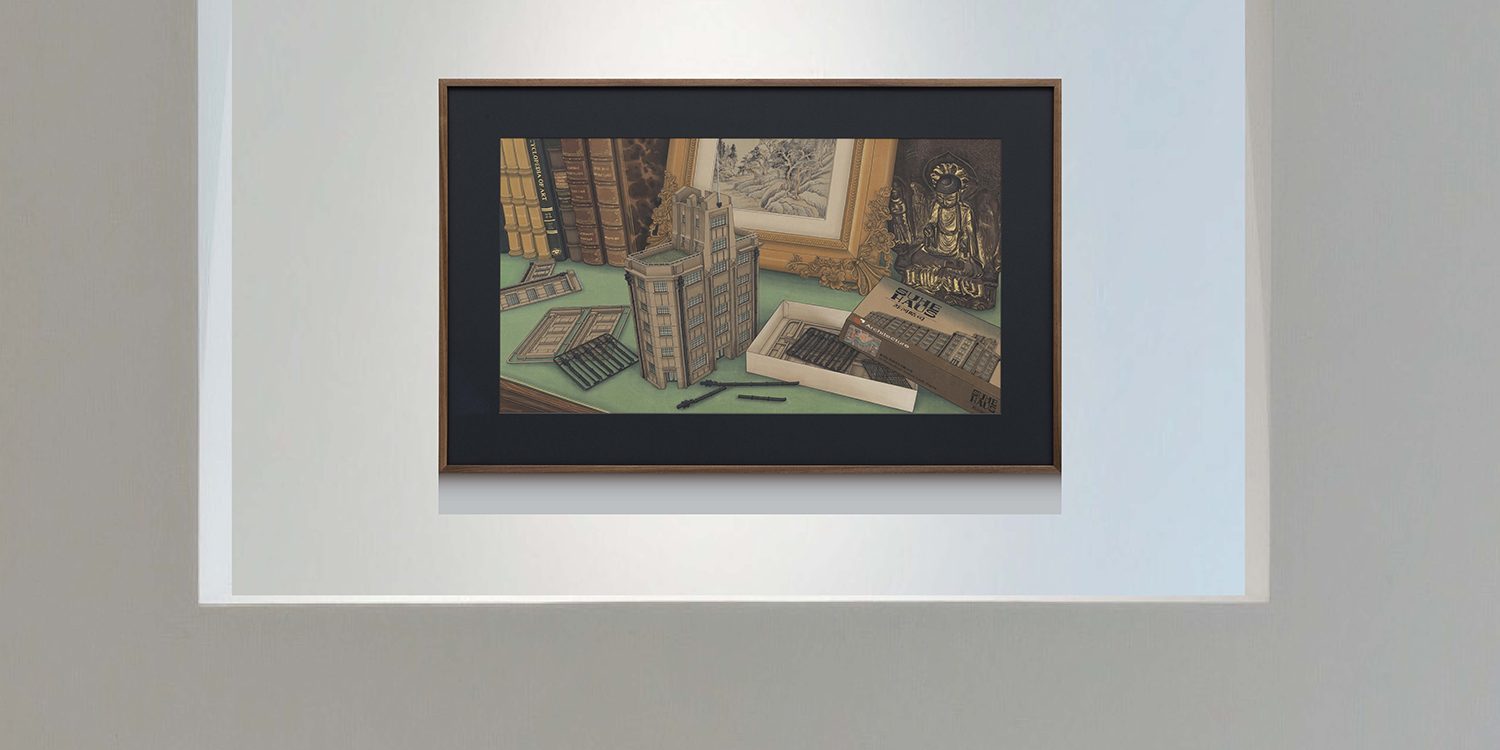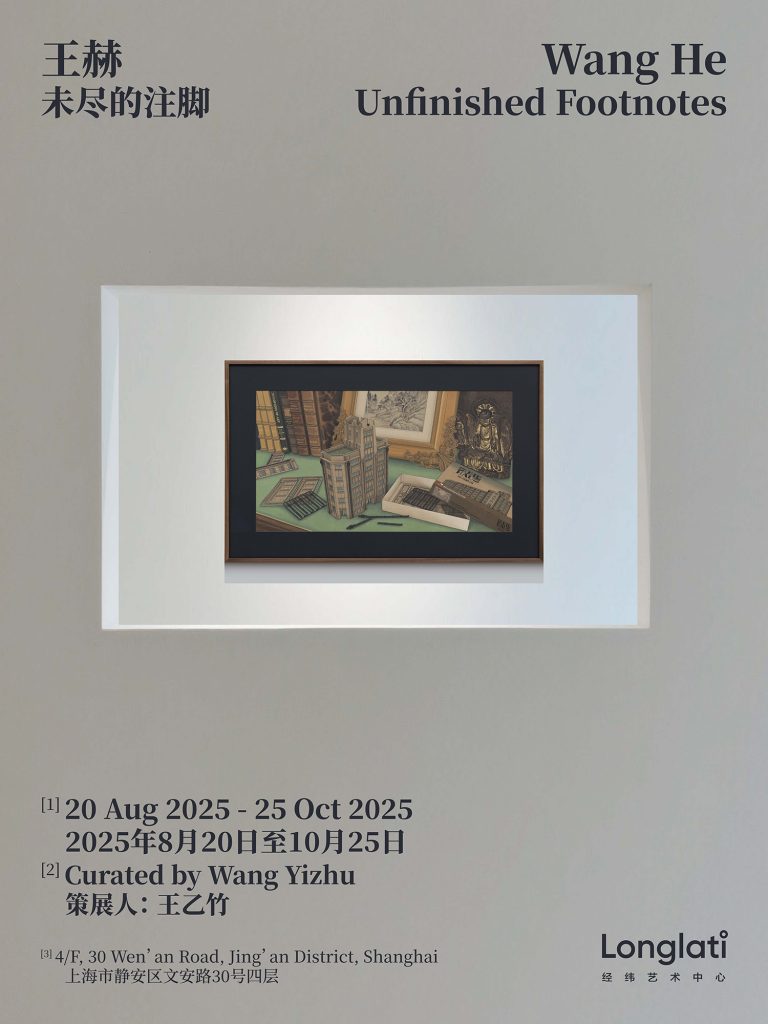
Longlati is pleased to present Unfinished Footnotes, a solo institutional exhibition of Chinese artist Wang He (b. 1983, Beijing), opening on August 20, 2025. Featuring 14 recent paintings on silk, the artist explores the translational and regenerative potential of traditional Chinese media in a contemporary context. Through this practice, Wang constructs a new visual schema wherein “past, present, and future” coexist in the moment, forming a sustained and generative painterly language.
Much like the insertion of footnotes, Wang He embeds fragments of collective cultural memory into his work—subtly and elusively, they linger at the edges of the image rather than taking center stage. These visual traces provoke an active gaze and divergent interpretations, unfolding a field of open-ended annotations. Functioning like marginalia that offer commentary or conceptual extensions, they propel the visual language beyond the frame’s confines.
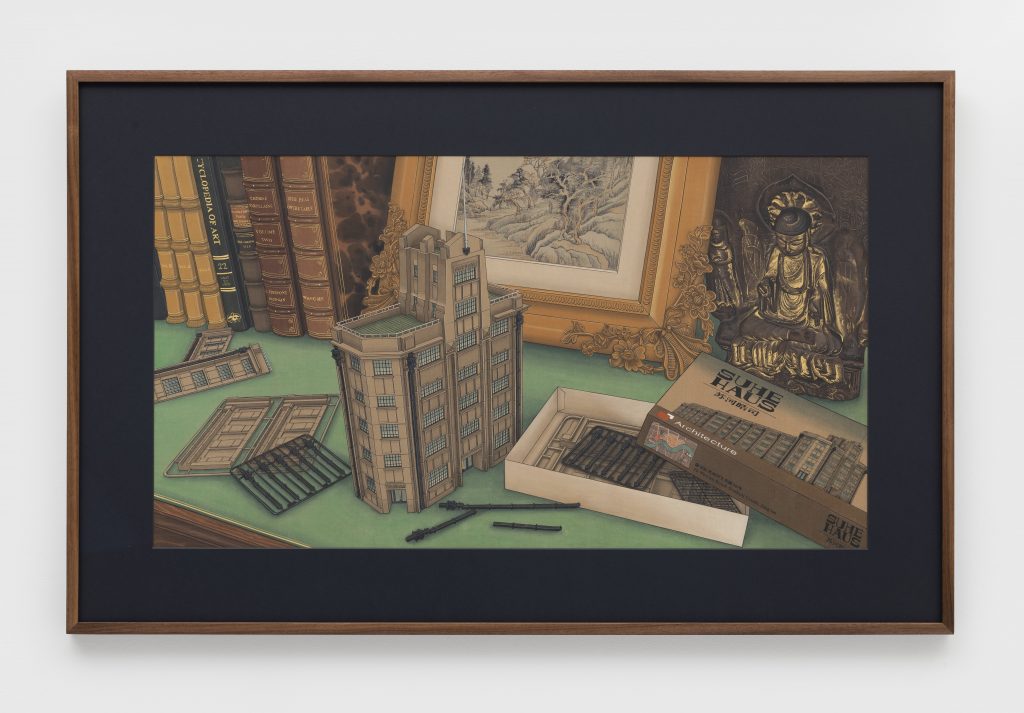
Wang He, Upon the Desktop: Suhehaus, 2025, ink and color on silk, 50 × 90 cm. Courtesy the artist and Hive Center for Contemporary Art
The notion of Unfinished Footnotes gestures toward a broader spatial construction beyond the image. It is neither a mere supplement to the main narrative nor an unfinished monologue, but rather a multilayered language latent between image, material, and imagination. It suggests that the image is always present, yet constantly deferred—a process of Différance. The “unfinished” signals an openness and the potential for continuous evolution, while the “footnote” evokes a mode of engagement and interpretive trajectory on the part of the viewer. At the convergence of the two, Wang He constructs a floating layer of language—one that drifts between expression and erasure, between history and the present—within the delicate interplay of silk, pigment, and image.
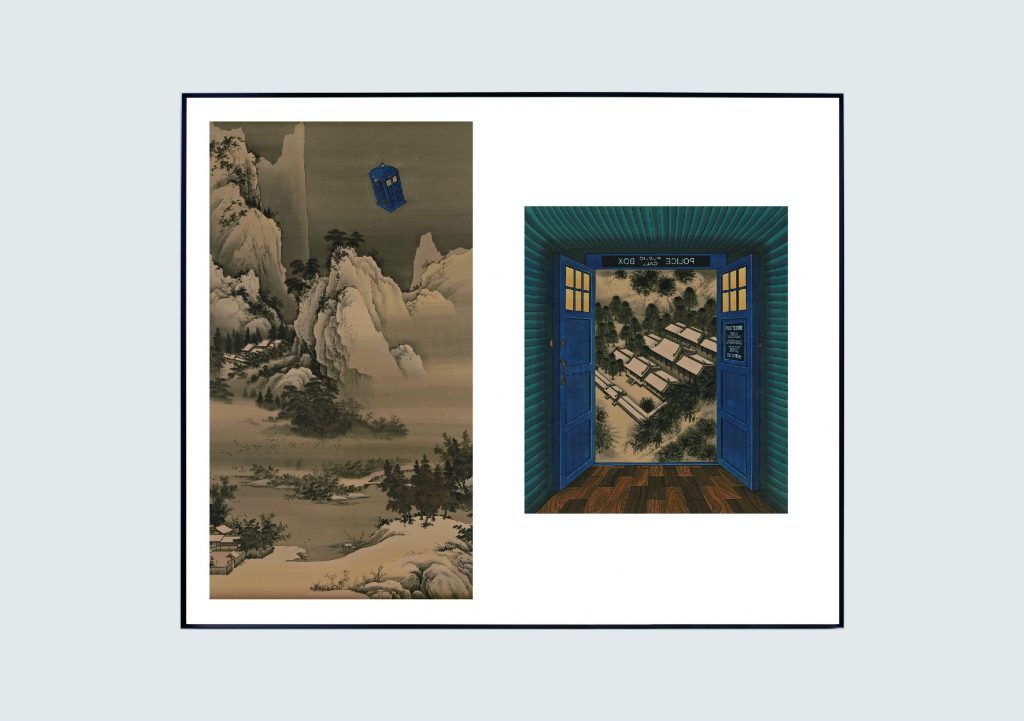
Wang He, TARDIS: Snow at Dusk over Mountains and Streams, 2021, ink and color on silk, the left panel: 103 × 56 cm; the right panel: 56 × 56 cm. Courtesy the artist and Hive Center for Contemporary Art
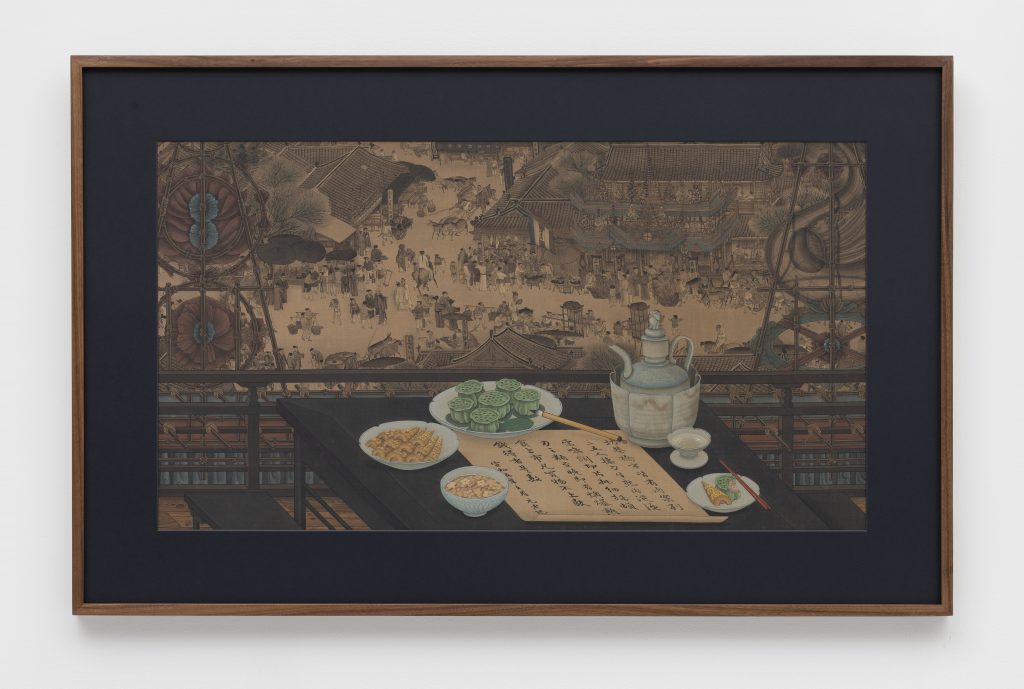
Wang He, Upon the Desktop: The Dining Table of Meng Yuanlao, 2025, ink and color on silk, 50×90 cm. Courtesy the artist and Hive Center for Contemporary Art
Amid these layered dislocations, we neither return to a pure “First space” of origin, nor are we fully cast into an “Elsewhere” of the Second space. Instead, we enter what cultural theorist Homi Bhabha (b.1949) articulates as the Third Space—a hybrid realm transcending singular affiliations. It is a site where cultural differences give rise to interwoven scenarios of time and space, history and futurity, reality and imagination. As Bhabha writes, it is that Third Space, though unrepresentable in itself, which constitutes the discursive conditions of enunciation (1994, p. 37).
The Third Space carries with it a dense layering of cultural collage and historical suturing. Within Wang He’s paintings, one encounters fragments of ancient artifacts, intact historical imagery, materials rooted in contemporary manufacture, and the “traces” of painting itself—gestures that are neither mimetic nor concealing, but instead hold the weight of temporal sedimentation and suspended memory. Wang He’s consistent artistic strategy—from View Within the Book, View Within the Scope, and View from the Window to his latest Upon the Desktop series—Wang has been to deliberately dissolve the linear logic of the temporal axis. He disassembles and recombines cultural symbols, visual languages, and historical memories from different dimensions, allowing them to intersect and overlay one another visually, while semantically infiltrating each other. Unfinished Footnotes is not a closed set of images, but a methodology of viewing—a re-inscription of history, memory, and identity. Images cease to serve merely as representational devices; they emerge instead as simultaneous presences of time and space—constantly overlapping, perpetually rewritten.
Rather than simply creating images, Wang He constructs a site for the reenactment of memory. He extracts visual fragments from the past and repositions them as footnotes through acts of transfer and imprinting, allowing their original meanings to loosen, shift, and expand. The Cun (brushwork) and patterns may seem rooted in antiquity, yet the disjunction between material and context generates the allure of archaism—an emulated antiquity—not a replica. Subtly, emergent lines and brushstrokes are provisionally reversed, elevated into a new “main text.” Within these unfinished footnotes, the artist invites the viewer as a “co-author,” situated in their own local experience, to trace personal trajectories of meaning across the image’s gaps and seams.
[1]Bhabha, H. K. (1994). The location of culture. p.34. Routledge.
About the Artist
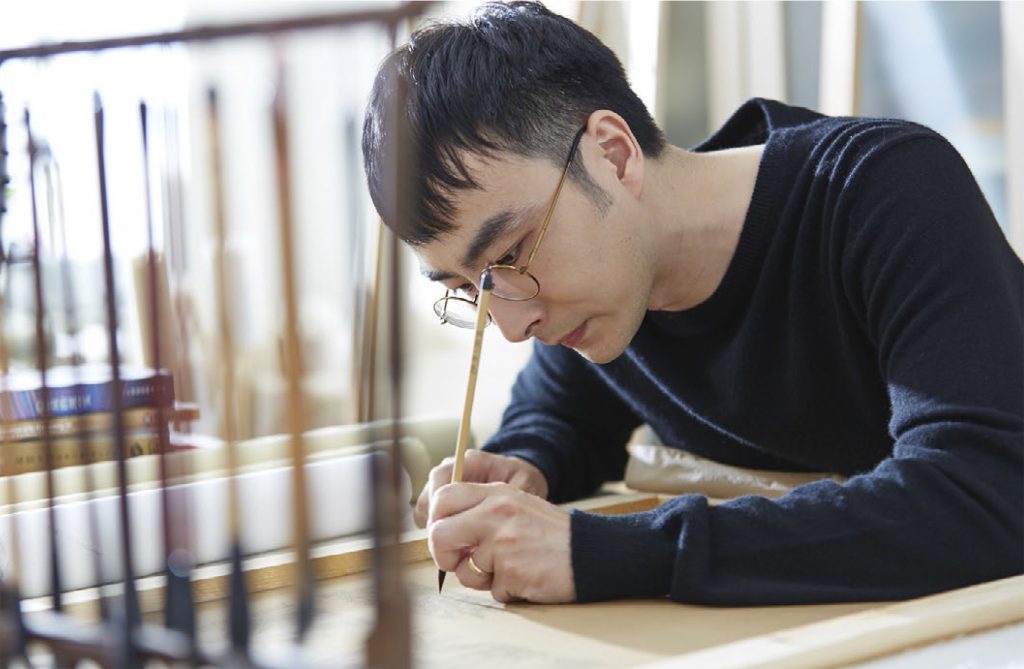
Wang He. Courtesy of the artist
Wang He (b. 1983, Beijing) currently lives and works in Beijing. He received his BA in Product Design in 2006, and his MA in Art Design in 2008 from the Academy of Arts & Design, Tsinghua University. In 2011, he joined the inheritance of National Intangible Cultural Heritage, dedicated to the replication and reproduction of ancient paintings and calligraphy. In 2020, he was appointed Head of the Technical Reproduction Group of the Palace Museum in Beijing. Wang is currently a researcher at the Palace Museum and a member of Chinese Fine Brushwork Association.
Recent solo exhibitions include: Wang He: Roam of Infinite Vision, Hive Center for Contemporary Art, Beijing, China (2023); Time Machine: Wang He Solo Exhibition, Time Museum, Beijing, China (2019). Recent group exhibitions include: A Cloud in Trousers. Painting Today, West Bund Museum, Shanghai, China (2024); Centre Anywhere, Yuan Art Museum, Beijing, China (2024); Gathering Ingenuity: A Panorama of Contemporary Chinese Ink Art, Longfu Cultural Center, Beijing, China (2024); Pidgin Spectrum: Nonlinear Narratives of Multiculture, 14th Shanghai Biennale “Cosmos Cinema” city project, Sinan Mansions-Sinan Time Zone, Shanghai, China (2023); Sailing: Contemporary echoes of Maritime Silk Road, Zhangjiagang Art Museum, Jiangsu, China (2023); Silhouette of Splendors, Hive Center for Contemporary Art, Shanghai, China (2023); Chinese Young Fine Brushwork Academic Nomination Exhibition, Jiangsu Art Museum, Jiangsu, China (2023); Chinese Ink Yearbook Exhibition, An Art Museum, Beijing, China 2022); Wizard, Craftsman and Time Traveler, Yi Art Institute, Anhui, China (2022); The Salvation of Shahrazad: Memo of the New Generation Painting, Hive Center for Contemporary Art, Beijing, China (2022); From the Canglong Pavilion, The Fourth Jinji Lake Biennale, Jiang Su, China (2018).
